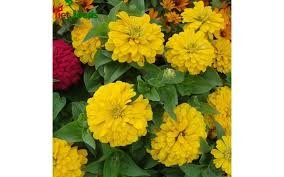
Chrysanthemums, with their vibrant colors, diverse forms, and prolonged blooming period, offer invaluable contributions to landscape design, enriching outdoor environments with beauty, texture, and seasonal interest. From formal gardens to urban parks, chrysanthemums find versatile applications in landscape settings, serving as focal points, mass plantings, accent features, and thematic elements that enhance visual appeal and create memorable experiences for visitors. In this exploration of chrysanthemums in landscape design, we delve into the myriad ways these versatile flowers can be incorporated into outdoor spaces, elevating aesthetics, fostering biodiversity, and fostering connections with nature.
**1. Seasonal Displays:**
Chrysanthemums are celebrated for their spectacular fall blooms, making them prized additions to seasonal landscape displays that showcase the vibrant colors of autumn. In parks, botanical gardens, and public spaces, large-scale chrysanthemum installations, such as mass plantings, flower beds, and floral arrangements, create captivating focal points that draw visitors and evoke the spirit of the season. Vibrant hues of yellow, orange, red, and bronze mingle with the changing foliage, transforming landscapes into living tapestries of color and texture. Chrysanthemum festivals and events, held in cities around the world, highlight the cultural significance and horticultural diversity of these beloved flowers, attracting tourists and locals alike to admire the stunning floral displays and participate in festive activities. Landscape designers and horticulturists collaborate to design seasonal chrysanthemum displays that capture the essence of autumn, utilizing creative plant combinations, thematic elements, and innovative design techniques to create immersive and memorable experiences for visitors of all ages.
**2. Architectural Accents:**
Chrysanthemums lend themselves to architectural landscaping, where they serve as versatile accents that complement built structures, define spatial boundaries, and soften hardscape elements with natural beauty. In urban environments, chrysanthemums are often used in container gardens, hanging baskets, and window boxes to add vertical interest, soften façades, and introduce bursts of color to streetscapes and outdoor living spaces. Along walkways, pathways, and entrance areas, chrysanthemums are planted in borders, edgings, and low-growing hedges to delineate pathways, frame views, and create inviting transitions between outdoor areas. In formal gardens and estate landscapes, chrysanthemums are trained as standards, espaliers, or topiaries, shaping them into geometric forms or architectural accents that complement classical design motifs and add a sense of structure and elegance to garden compositions. By integrating chrysanthemums into architectural landscaping, designers enhance the visual interest, functionality, and aesthetic appeal of outdoor spaces, creating harmonious compositions that seamlessly blend nature and built environment.
**3. Ecological Plantings:**
Chrysanthemums play a valuable role in ecological plantings, contributing to biodiversity, habitat restoration, and ecosystem services in urban and suburban landscapes. In sustainable landscape design, chrysanthemums are selected for their pollinator-friendly flowers, which attract bees, butterflies, and other beneficial insects, supporting local ecosystems and promoting biological diversity. Native and heirloom chrysanthemum varieties are incorporated into wildlife gardens, rain gardens, and green infrastructure projects, where they provide food and shelter for native pollinators, birds, and small mammals, while also helping to manage stormwater runoff, improve soil health, and mitigate urban heat island effects. Landscape architects and conservationists prioritize the use of regionally appropriate chrysanthemum species and cultivars that are well adapted to local climate conditions, soil types, and ecological niches, ensuring successful establishment and long-term viability of ecological plantings. Through thoughtful selection and placement, chrysanthemums contribute to the resilience, functionality, and ecological value of designed landscapes, fostering connections between people and nature while enhancing the health and beauty of outdoor environments.
**4. Theme Gardens and Cultural Landscapes:**
Chrysanthemums serve as iconic symbols in theme gardens and cultural landscapes, where they evoke cultural heritage, traditions, and symbolism associated with these revered flowers. In Japanese gardens, chrysanthemums hold special significance as symbols of longevity, resilience, and the changing seasons, featured prominently in autumnal displays, tea ceremonies, and floral art forms such as ikebana. Chrysanthemum festivals, such as the Kiku Matsuri in Japan, celebrate the cultural heritage and artistic beauty of chrysanthemums, attracting visitors from around the world to admire intricate floral arrangements, bonsai specimens, and historical exhibits that showcase the rich diversity of chrysanthemum cultivars and cultivation techniques. In Western landscapes, chrysanthemums are cherished for their associations with autumn festivals, harvest celebrations, and seasonal décor, where they add a touch of warmth, elegance, and nostalgia to garden settings. Theme gardens, such as cottage gardens, Victorian gardens, and formal parterres, incorporate chrysanthemums as key elements that reflect historical styles, design motifs, and cultural influences, creating evocative landscapes that resonate with visitors on both aesthetic and emotional levels. By integrating chrysanthemums into theme gardens and cultural landscapes, designers pay homage to the cultural significance and timeless beauty of these iconic flowers, fostering appreciation for nature’s bounty and cultural heritage among visitors of all backgrounds.
**5. Seasonal Variety:**
Chrysanthemums offer a wealth of seasonal variety, making them versatile components of landscape design that can be tailored to suit different seasons and aesthetic preferences. In spring, early-flowering chrysanthemum varieties herald the arrival of the growing season with delicate blooms in pastel shades of pink, lavender, and white, adding a sense of freshness and renewal to garden landscapes. These spring-blooming chrysanthemums are often used in mixed borders, rock gardens, and container plantings to provide early-season color and texture while complementing other spring-flowering perennials and bulbs. As summer unfolds, mid-season chrysanthemums burst into bloom with a profusion of flowers in bold hues of red, orange, and yellow, creating dynamic focal points and eye-catching accents in garden beds, borders, and floral displays. These mid-summer chrysanthemums are prized for their robust growth habits, long-lasting blooms, and heat tolerance, making them popular choices for summer garden design. In autumn, late-flowering chrysanthemums steal the spotlight with their showy displays of color, ranging from rich golds and bronzes to deep purples and russets, signaling the transition to the fall season and adding warmth and vibrancy to landscapes. These autumn-blooming chrysanthemums are featured in seasonal plantings, container gardens, and thematic displays that celebrate the harvest season, Halloween, and Thanksgiving, infusing outdoor spaces with festive flair and seasonal charm. By selecting chrysanthemum varieties that bloom at different times of the year, landscape designers can create dynamic, ever-changing landscapes that delight the senses and evoke the beauty of each season.
**6. Design Principles:**
Chrysanthemums are versatile design elements that can be incorporated into landscape compositions using a variety of design principles and techniques to achieve desired aesthetic effects. In formal garden design, chrysanthemums are often used in symmetrical arrangements, geometric patterns, and structured plantings that emphasize order, balance, and precision. These formal plantings may feature chrysanthemums as focal points in parterre gardens, knot gardens, or formal flower beds, where they are planted in precise rows, patterns, or repeating motifs to create a sense of symmetry and formality. In contrast, informal garden design embraces a more relaxed, naturalistic approach, where chrysanthemums are integrated into mixed borders, cottage gardens, and meadow plantings that emphasize spontaneity, abundance, and diversity. These informal plantings may combine chrysanthemums with other perennials, grasses, and ornamental shrubs to create dynamic, layered compositions that evolve over time and reflect the changing seasons. Regardless of design style, landscape designers employ principles of color, texture, scale, and proportion to create visually engaging chrysanthemum plantings that harmonize with surrounding elements and enhance the overall aesthetic appeal of outdoor spaces.
**7. Maintenance Considerations:**
Effective maintenance practices are essential for ensuring the health, vigor, and longevity of chrysanthemum plantings in landscape settings. Regular watering, especially during periods of drought or hot weather, is crucial to keep chrysanthemums well hydrated and prevent wilting or stress. Mulching around chrysanthemum plants helps retain soil moisture, suppress weeds, and maintain even soil temperatures, promoting healthy root development and reducing the need for frequent watering. Deadheading spent flowers encourages continuous blooming and prolongs the flowering season, while periodic pruning and pinching help maintain plant shape, control growth, and promote branching and flower production. Fertilizing chrysanthemums with balanced, slow-release fertilizers provides essential nutrients for growth and flowering, ensuring robust plant development and abundant blooms. Monitoring for pests and diseases, such as aphids, mites, powdery mildew, and leaf spot, is essential for early detection and prompt intervention to prevent damage and minimize plant stress. Integrated pest management strategies, including biological controls, cultural practices, and selective pesticides, can help manage pest and disease problems while minimizing environmental impact and ensuring plant health. By implementing proactive maintenance measures, landscape designers and gardeners can ensure the long-term success and aesthetic appeal of chrysanthemum plantings in landscape settings, creating beautiful, sustainable outdoor environments that enrich lives and inspire appreciation for the natural world.









